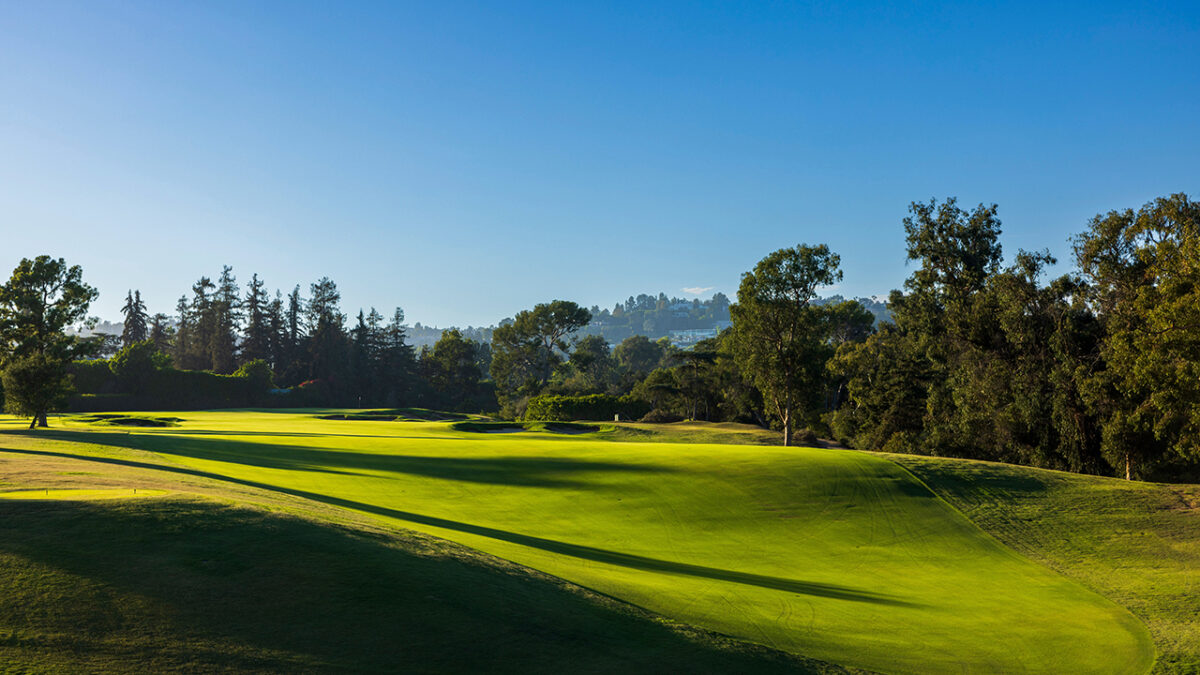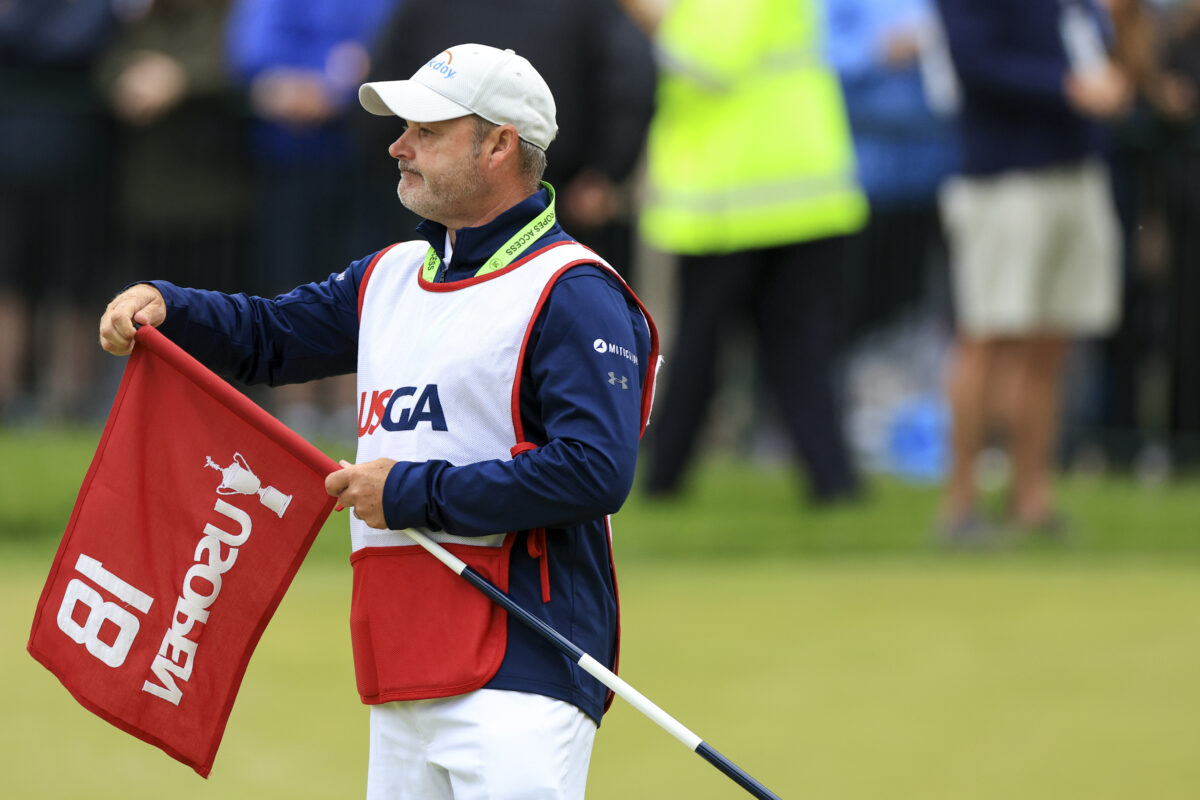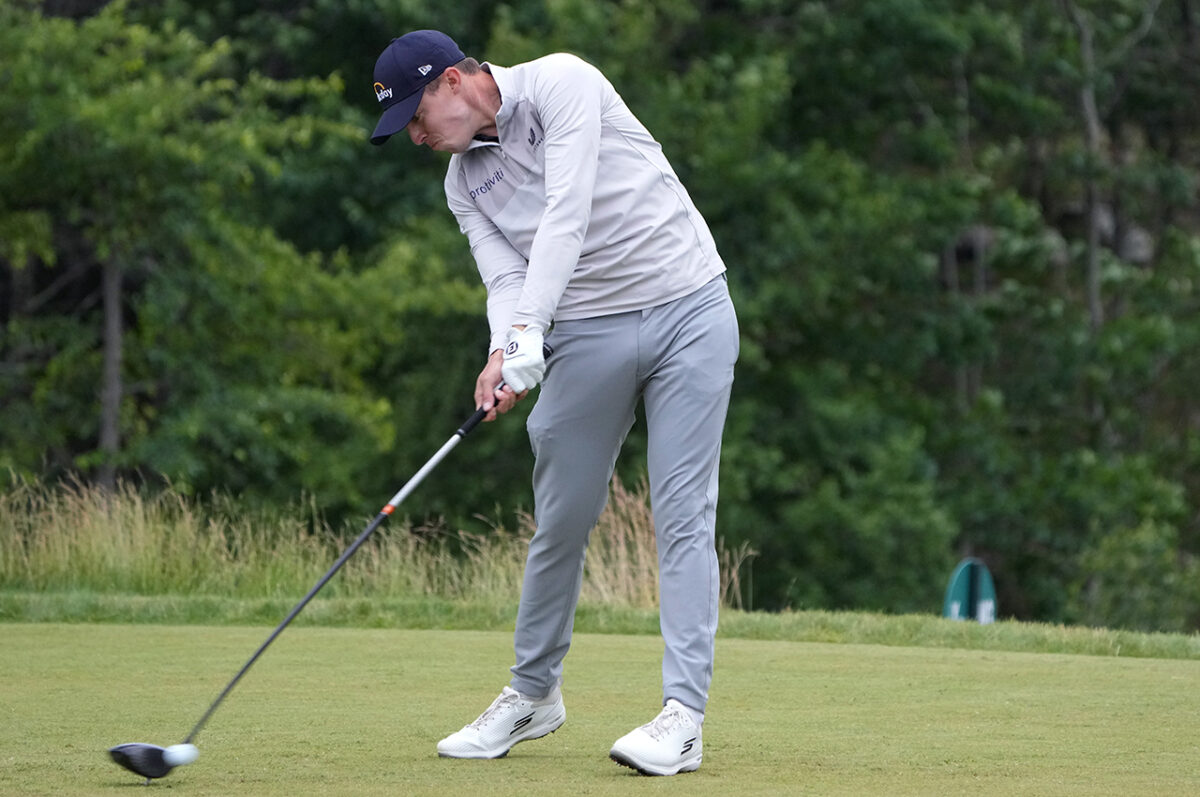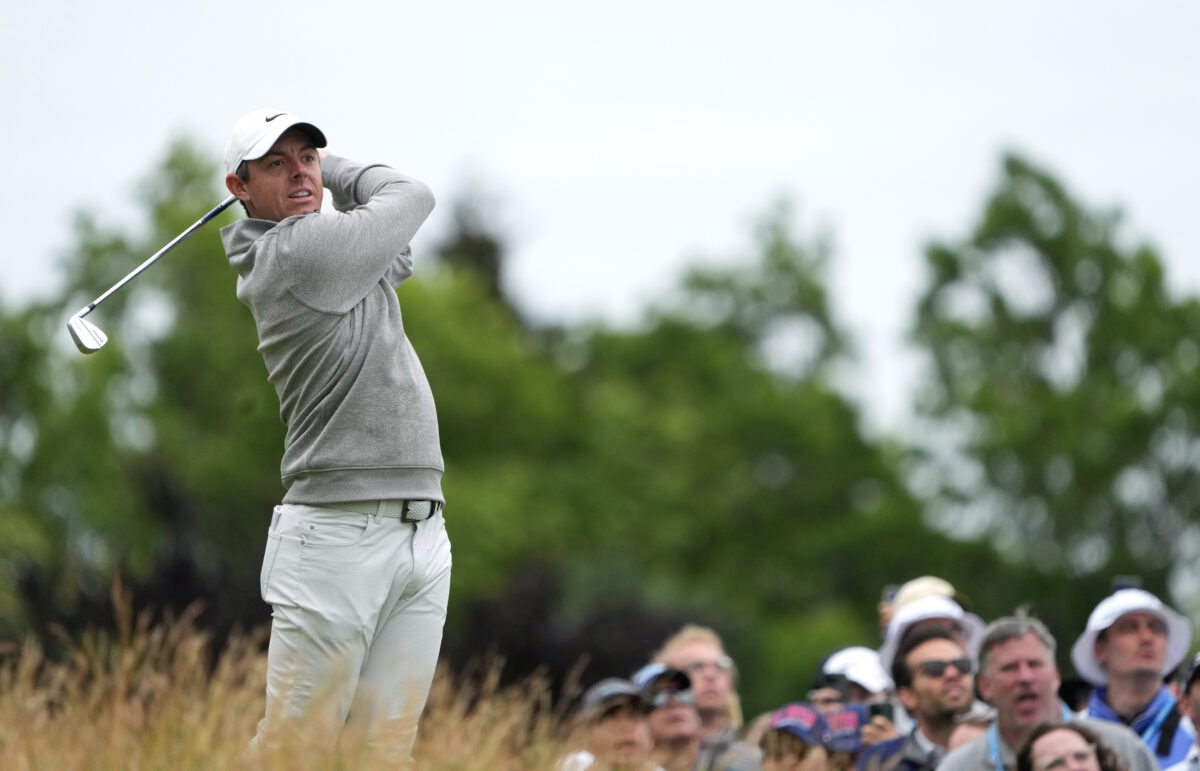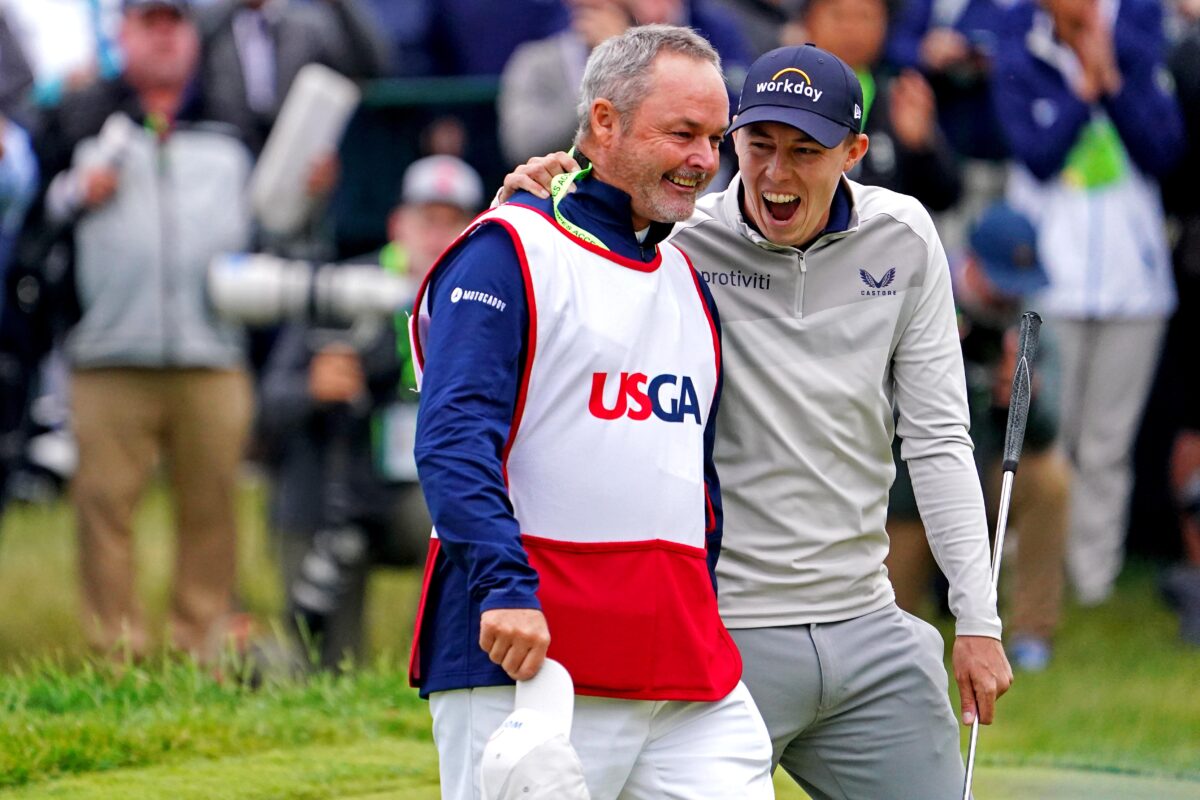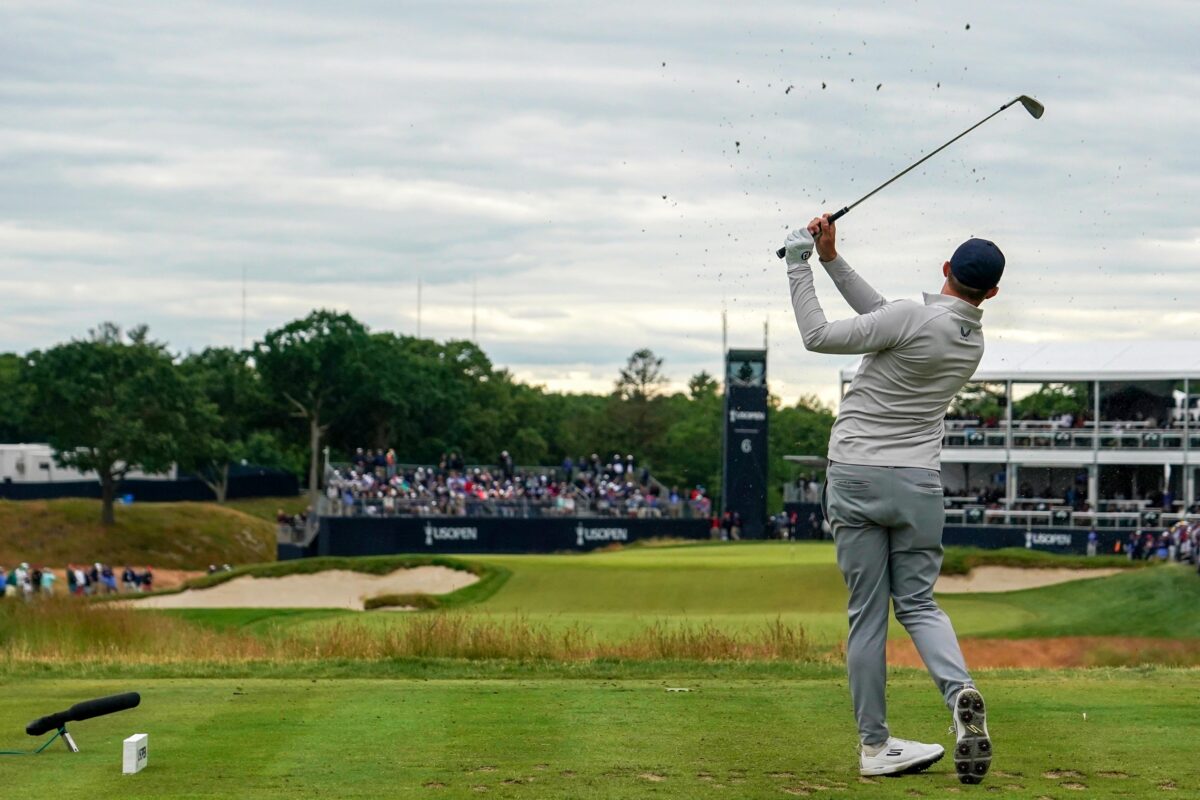[connatix div_id=”3f8b015acdd24c648befc5d5dac47469″ player_id=”b5b22055-8c69-4186-8375-d8426b37ec56″ cid=”7cbcea0d-4ce2-4c75-9a8d-fbe02a192c24″]
The fairways at this year’s U.S. Open at Los Angeles Country Club’s North course will be much wider than normally seen in the national championship. Don’t let that fool you into thinking they necessarily will be easier to hit – at least in the proper spots.
Designed by George C. Thomas Jr. and opened in 1928, LACC’s North Course was restored in 2010 by a team led by Gil Hanse, Jim Wagner and Geoff Shackelford. They removed stands of trees that lined fairways and reintroduced width as Thomas intended on the rolling property that features several gnarly barrancas near Beverly Hills. The layout ranks No. 2 in California on Golfweek’s Best list of private courses in each state, and it is No. 14 among all classic courses in the U.S.
Several of the fairways on the North Course are 50 to 60 yards wide in places, much wider than the normal corridors implemented by the U.S. Golf Association in many past championships. Some past U.S. Open courses have featured fairways an average of about 25 yards wide, often with prime spots less than 20 yards wide and surrounded by thick rough.
- U.S. OPEN: TV, streaming information
Width is a golf architect’s dream, as it promotes strategic play. Golfers must play to certain areas in the fairways to set up the best angles of attack, and the greater the width of the fairway, the more that smart players can take advantage. Such design creates interest and requires thought, tempting players to aim for the edges of wide fairways instead of just carelessly blasting drivers down the middle.
LACC North has plenty of width, to be sure, with some fairways pinching just a bit the farther a player hits a tee ball. But don’t confuse it with mindlessly bashing balls on a driving range. Thomas took advantage of the natural features to make these fairways play much skinnier than they look, and the USGA can’t wait to show off how LACC plays.
“What the architect George C. Thomas intended on this masterpiece, we will leave intact,” John Bodenhamer, the USGA’s chief championship officer, said during a recent media event at LACC. “Sure, we’ll come in and we’ll narrow up a few fairways. We’ll play the greens a little bit more speedier than the members would. And we’ll set a few difficult hole locations. We’ll put a little bit of a U.S. Open feel to it. But we will deliver what George C. Thomas intended to be at Los Angeles Country Club.”

The best areas in the fairways from which to play an approach are often the high spots to one side, nearest thick Bermuda grass that the USGA and the club has allowed to grow to three or four inches in height. Early reports and videos from LACC this week have shown balls being dropped into the rough and almost disappearing – it’s a bit of a cliché to show such videos on social media, but cliché or not, it’s hard to hit long irons out of such salad. Players have had to scramble to find balls in the rough during practice rounds without the help of tournament volunteers.
Bermuda rough, known for its thickness and the difficulty it presents, is rare in a U.S. Open. The last Open course to use Bermuda was Pinehurst No. 2 in 2014, but that layout relied on sand and scrubby native areas instead of thick rough. This year the rough is much more in the normal style of a U.S. Open than at Pinehurst. Bodenhamer said succinctly, “The rough will be difficult.”
More: U.S. Open leaderboard, hole-by-hole tour
Throw in the extremely rolling terrain, with tee shots on many holes kicking down large hills, and it will be difficult for players to hit the high spots and keep a ball there. Anything that misses toward the center of the fairway will roll speedily downhill, presenting a less-than-perfect approach angle, often from a blind spot in the fairway. Anything that misses too close to the rough is likely to bounce into tall Bermuda grass. Players must be precise, both in hitting the line and spinning the ball one direction or another to keep it there with a driver or fairway wood.
“If we get the conditions we hope for and the weather cooperates, and we get bounciness and firm and fast conditions, we think the best players in the world will rise to the top,” Bodenhamer said. “Because the greatest players control their golf ball not only when it’s in the air, but also when it hits the ground. And when it hits the ground here on this golf course, it goes all over the place.”
The application of width extends all the way to some green sites that feature chipping areas and runoffs at fairway height. Players will sometimes be forced to blast pitches out of patches of the tall stuff, while other times they will be forced to employ a delicate touch from short grass. It likely will be a common refrain about players in contention that they are missing in the right spots, meaning they retain some control over their recovery shots instead of watching haplessly as balls roll away from greens into the worst of the trouble.
“You will see a U.S. Open that is wider than most U.S. Opens. What I mean by that, you will see 50- and 60-yard-wide fairways, George Thomas style. … You’ll see balls bouncing around greens and fairways, getting caught up in rough. You’ll see it all here at LACC. And we will stay true to what the architect intended.”
Bodenhamer, who joined the USGA in 2011 and has played high-level amateur golf, gave several examples of holes where wide fairways don’t necessarily mean large targets.
“You’ll see No. 5 will be about 50 yards wide, but with the (left-to-right) cant of the fairway, you better hit a right-to-left shot into it or it won’t stay in the fairway,” he said. “No. 13 may be one of the widest fairways in U.S. Open history, but if you don’t hit it into a little 20-yard swath up the left side, you’re going to be down below on the right side, blind up to the 524-yard par 4. It will be difficult.”

Another note on the rough this year: It will all be nasty. In recent years the USGA has frequently employed a strip of less-tall intermediate rough between the fairway cut and the thickest grass, allowing some measure of relief for players who barely miss or land a ball in a fairway only to see it trickle into the rough. Bodenhamer said that at LACC, there will be no intermediate cut. When it comes to hitting the fairways, it will be all or nothing.
“We want players to get every club in their bag dirty, to hit it high, to hit it low,” Bodenhamer said. “Work it left to right, right to left. Bunkers, pitch shots, mental and physical resolve. And yes it’s tough. We will set it up tough. But when you get to the mountaintop of winning a U.S. Open, you will have achieved something special.”
[pickup_prop id=”33873″]
